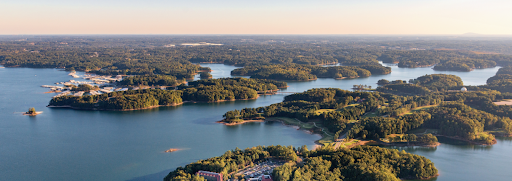As communities continue to recover from widespread destruction caused by recent Hurricanes Helene, floodwaters from these storms may have accelerated the spread of invasive wildlife and plant species into new areas – from the mountains of north Georgia to the flatlands and swamps of south Georgia. That’s according to a new study by the U.S. Geological Survey (USGS).
Among the potentially affected areas in northeast Georgia are Lake Lanier (pictured), Mossy Creek, Wahoo Creek, Suwannee Creek, Settingdown Creek, Chattahoochee River, Soquee River, Little River, Chestatee River, Etowah River headwaters, Hiwassee River, Tallulah River, and Chatuge Lake.
A USGS map finds that there are 222 possible non-native species that had the potential to spread in Georgia and Florida due to storm-related flooding from Hurricane Helene, which devastated southern states including Georgia in September. The list includes 90 species considered invasive and likely to spread via flood waters.
These out-of-place critters are potential problems for all Georgians, says Mike Worley, president of the Georgia Wildlife Federation.
“These plants or animals come into an area, and they are uniquely adapted to the area in which they evolved, and they generally will have their own set of predators, they’ll have checks on their population, but they come into a new area – and all these invasive species are getting here because we’re bringing them in some way, either intentionally or accidentally – and suddenly they find a new niche in the world where there’s no checks on them,” he said.
Without those checks, invasive species can decimate native creatures, which can disrupt the entire food chain.
“If you live in Georgia because you like Georgia, then invasives are a problem because they can fundamentally change it. They can fundamentally change the nature, they can change the very essence of what we are,” Worley added.
The species monitored in the USGS’s map include everything from plants and algae to fish, reptiles and crustaceans. The survey provides an interactive map of where different species have already been seen and where Helene-related flooding may have washed them up.


